Clear Touch
Greenville, SC 29607
United States

April 18, 2022 - Universal Design for Learning: An educational framework that is designed to meet the needs of all students. As methodology and practices in education continue to evolve, it is important for educators to adapt. The mental framework of students has changed. Each year students enter school with more advanced digital literacy skills, and their classrooms offer various technologies for teaching and learning. The needs and expectations of students have always been varied and diverse, even more so in today’s environment. This is where educators are encouraged to readdress and expand their methodology pedagogical approach to ensure that they get the desired results across the board. This includes giving the students the ability to display mastery through a variety of mediums, ensuring that they are provided with the options that suit their individual needs.
Meet the Universal Design for Learning (UDL) model. UDL is an educational framework based on research in the learning sciences, including cognitive neuroscience. This framework guides the development of flexible learning environments and learning spaces that can accommodate individual learning differences. The framework is divided into the following:
Multiple Means of Representation
This design feature addresses the inherent differences in how a person perceives and comprehends information. Learning differences (sensory, language, cultural) require content to be provided in ways that adhere to the students’ different ways of acquiring information and knowledge. Software like Snowflake is designed to incorporate written text, audio, video, and graphics into how the content is presented into lesson plans, ensuring that every student has their needs met.
Multiple Means of Action and Expression
Because each student is unique, the way in which they demonstrate mastery is unique as well. Some students may easily write an essay or answer a written question, and some may have physical differences that preclude them from doing so. Language barriers may block understanding of written text, but graphics and imagery may provide a more efficient route to demonstrate mastery. Snowflake gives students the opportunity to display mastery through various forms approved by the teacher, including text, graphics, video, and voice recorded content.
Multiple Means of Engagement
Various factors impact the ways in which students engage with content. Each person comes to a learning process with different background knowledge, culture, subjective understanding, and neurology. The Snowflake software is built to allow for individual or group instruction, loose frameworks that allow for creativity or specific instructions chunked for incremental success.
The implementation of a UDL framework is easier than it has ever been. Technology has given educators the tools to customize, build, and adjust their lessons plans to any student or situation. Most classrooms have made the switch from projectors and blackboard to interactive displays and enhanced software suites. These are crucial tools when it comes to curating a UDL framework. Take us (Clear Touch) for example.
We have engineered our interactive panels to be entirely accessible to all learners. They come in different sizes and with different capabilities. Our stands are entirely versatile and easily accessible to any student regardless of age or disability. These physical adjustments are greatly expanded upon with our software suite and in particular, Snowflake. This software comes with thousands of pre-designed lesson plans and activities that can be entirely customized by the teacher. Snowflake recognizes that each student is unique, the way in which they demonstrate mastery is unique as well. Some students may easily write an essay or answer a written question, and some may have physical differences that preclude them from doing so. Language barriers may block understanding of written text, but graphics and other mediums may provide a route to demonstrate mastery.
Students have the access to create lesson activities using the same templates provided to teachers. This provides a method by which they can include text, video, audio and graphics in order to demonstrate mastery. This allows students to experience success regardless of the barriers (physical, cultural, linguistically, etc) that may block that accomplishment in other platforms. Students turn from consumers of content to creators of content.
For more on Snowflake: Snowflake Software







